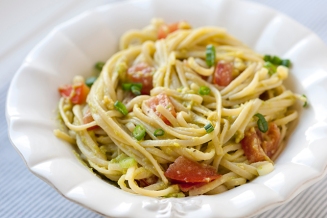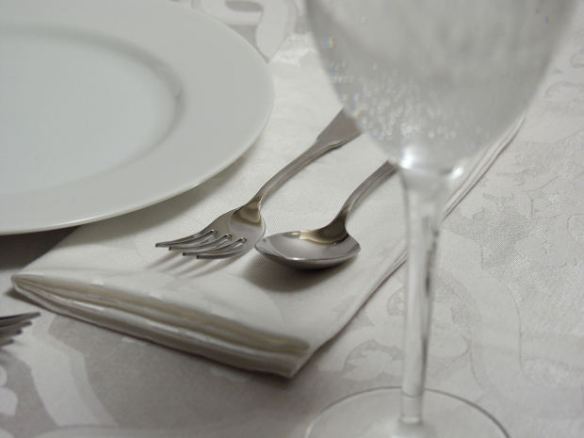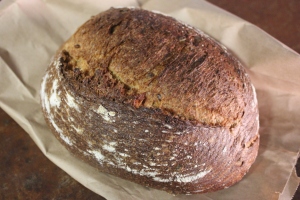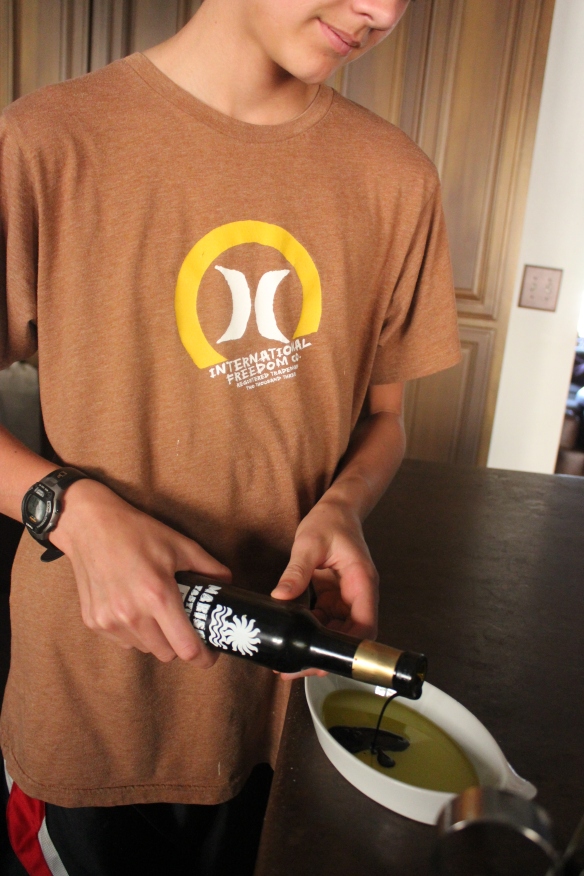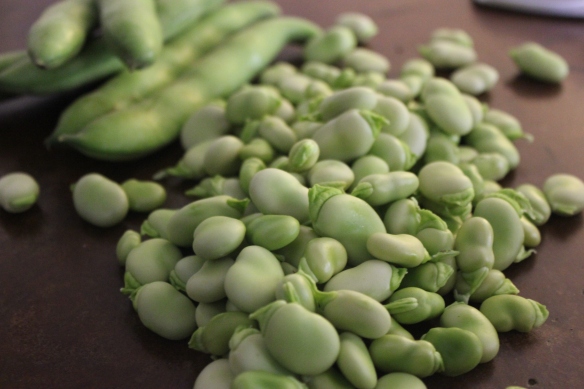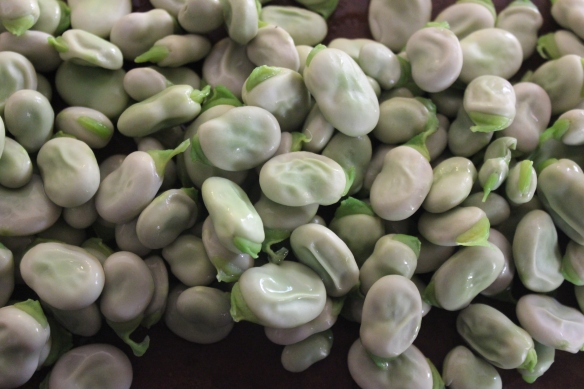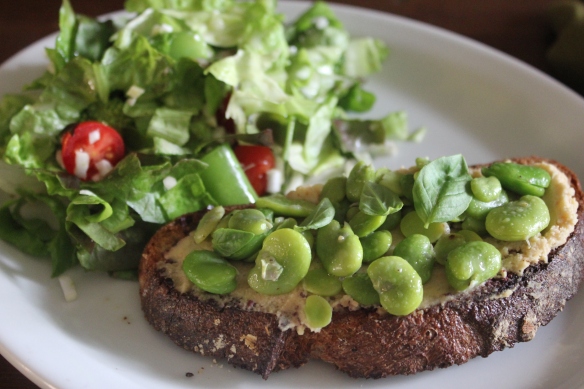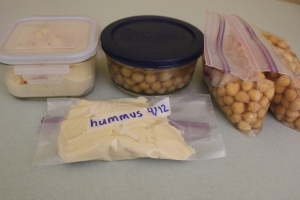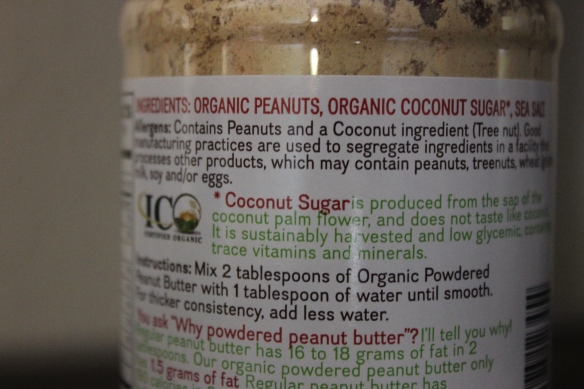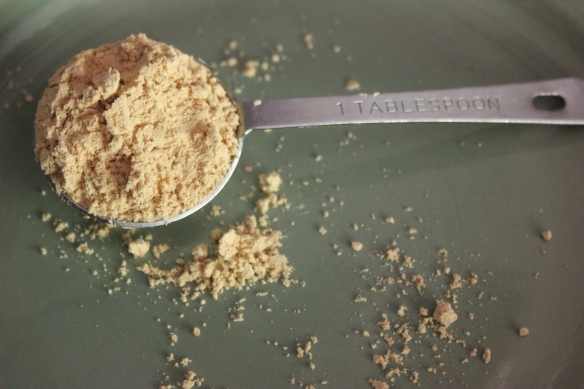The more I learn about sugar and how my body processes the stuff, the less I worry about the particular source–be it low glycemic coconut sugar or the demonized high fructose corn syrup (HFCS).
I definitely don’t go out of my way to eat products containing HFCS. I don’t keep it in my kitchen or cook with it, but I agree with the Nutrition Diva on this one.
We should be less concerned with the form sugar takes and more concerned about the quantity. Excessive consumption seems to be the American Way. I wrote about recommended levels of sugar intake in a previous post. All sweeteners should be consumed in moderation.
That said, there’s a ginormous difference between a homemade treat and a Snicker’s Bar.

This candy bar contains almost three-quarters of the recommended maximum amount of sugar for a teenage boy!
Check out the ingredient list: MILK CHOCOLATE (SUGAR, COCOA BUTTER, CHOCOLATE, SKIM MILK, LACTOSE, MILKFAT, SOY LECITHIN, ARTIFICIAL FLAVOR), PEANUTS, CORN SYRUP, SUGAR, MILKFAT, SKIM MILK, PARTIALLY HYDROGENATED SOYBEAN OIL, LACTOSE, SALT, EGG WHITES, CHOCOLATE, ARTIFICIAL FLAVOR. MAY CONTAIN ALMONDS
Definitely not real. Highly processed and not something I could make in my own kitchen. Not to mention a rather alarming amount of sugar. I definitely wouldn’t send one with my teenager for quick energy before after school sports.

No calorie counting here!
The question then is what can be sent that is easily portable, real and sweet enough to appeal to a teenage boy more concerned with taste than nutrition.
The inspiration for one of the sweet treats that can be commonly found in my son’s backpack came from a vegan cookbook I found at Costco. The Forks Over Knives Cookbook has an awesome dessert section and, with a couple of improvisations, the following recipe was born…
A Better Granola Bar
- 1/2 cup peanut or almond butter
- 1/4 cup maple syrup
- 1/4 cup brown rice syrup (or honey)
- 1/2 teaspoon vanilla and 1/2 teaspoon almond extract (can use all vanilla)
- 1 teaspoon cinnamon
- 1/2 teaspoon salt
- 1/8-1/4 cup uncooked millet
- 2 cups whole rolled oats (not the quick kind)
Line the bottom of an 8×8″ pan with foil that extends up the sides. Lightly grease with cooking spray.
Heat nut butter and sweeteners together in a bowl in the microwave–just enough to mix easily, then stir together until smooth.
Remove from heat and stir in vanilla and almond extract, cinnamon and salt.
In a large bowl mix oats and millet with the syrup mixture. Stir well until oats are evenly coated. Use wet hands or the back of a wet spatula (water will keep it from sticking) to very firmly and evenly press the mixture into the prepared pan.
Bake at 350 for approximately 15 minutes–or until the edges look a bit browned. Cool to room temperature, remove from pan, remove foil and place in the freezer for at least 30 minutes before cutting with large kitchen knife (pressing straight down for a clean cut) into 8 equal rectangles.

To make it even more decadent, add 1/3 cup chocolate chips to the oat mixture before pressing into pan. Try chopped, dried apricots, toasted and roughly chopped almonds or whatever else appeals to you.

Perfect for packing! Only 3 teaspoons of sugar per bar.








